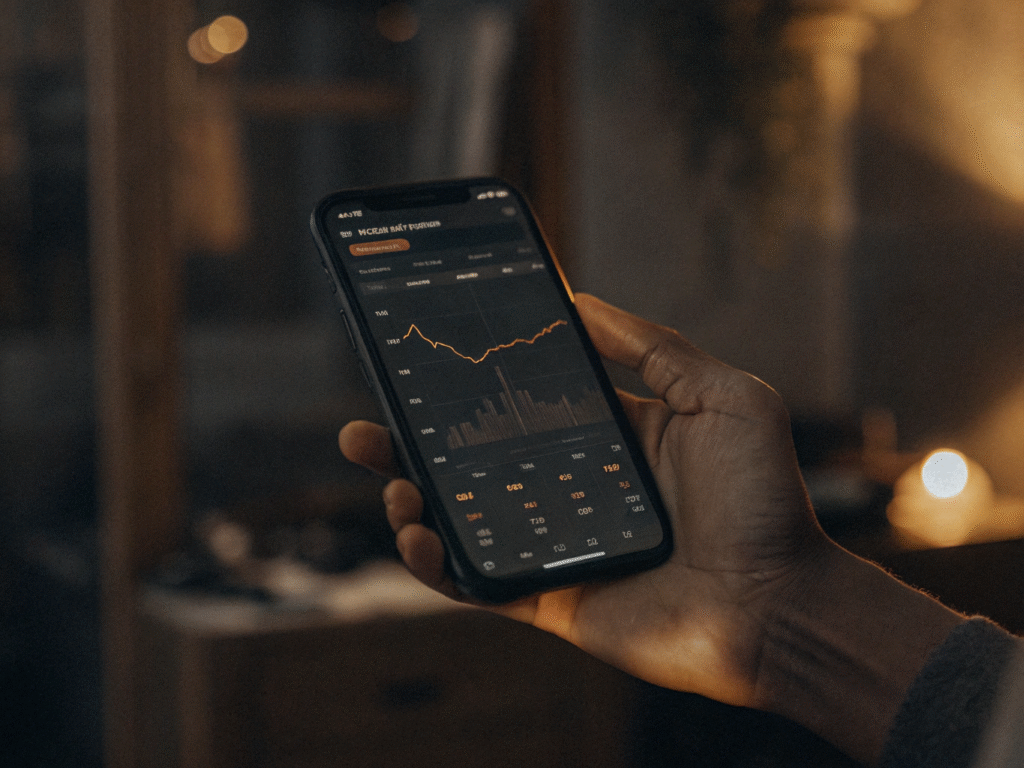
Key Takeaways for CFD Indices Trading
- Broad exposure: Gain access to entire equity markets through single contracts.
- Leverage opportunity: Control larger positions with limited capital, while managing risk carefully.
- Round-the-clock access: Many indices trade outside regular equity hours, offering flexibility.
- Diverse strategies: Trend-following, range-trading and event-driven setups all have a role.
What Are CFD Indices?
Contracts for Difference (CFDs) on indices let you speculate on a market’s overall performance without owning individual shares. Instead of buying stocks, you agree with your broker to exchange the difference in an index’s value between the opening and closing of your position.
How Do Index CFDs Work?
When you buy an index CFD, you go “long” if you expect prices to rise, and “short” if you anticipate a decline. Your profit or loss equals the difference between entry and exit prices, multiplied by your chosen contract size. Because CFDs involve margin, small market moves can translate into significant returns—or losses—so disciplined risk control is essential.
How Are Indices Calculated?
Benchmarks aggregate many stocks into a single value, using one of several weighting methods:
| Index Type | Calculation Basis | Example |
| Price-Weighted | Sum of individual prices ÷ divisor | Dow Jones Industrial |
| Capitalization-Weighted | Total market cap × share price ÷ total shares | S&P 500, NASDAQ 100 |
| Equal-Weighted | Arithmetic average of all constituent returns | Some boutique indices |
Price-Weighted Indices
Each company’s share price carries equal weight. A $1 move in a lower-priced stock affects the index as much as a $1 move in a blue-chip.
Capitalization-Weighted Indices
Larger companies influence the index more substantially, since their market value contributes a bigger slice of the total basket.
Equal-Weighted Indices
All members count equally, giving smaller names a chance to move the gauge; however, it requires periodic rebalancing.
Popular Indices for CFD Trading
Traders often focus on the world’s most liquid benchmarks:
| Index | Region | Ticker Symbol |
| S&P 500 | United States | SPX / US500 |
| NASDAQ 100 (US Tech 100) | United States | NDX / US100 |
| Dow Jones Industrial Average | United States | DJIA / US30 |
| FTSE 100 | United Kingdom | UK100 |
| DAX 40 | Germany | DE40 |
S&P 500
A broad measure of 500 large-cap U.S. firms, prized for its balance between growth and stability.
NASDAQ 100 (US Tech 100)
Heavily weighted toward technology and innovation, this index can swing sharply on earnings news or sector rotation.
Dow Jones Industrial Average (DJIA)
Comprised of 30 blue-chip stocks, it’s price-weighted and often used as a proxy for overall U.S. equity sentiment.
FTSE 100
The U.K.’s leading index, dominated by energy, financial and materials firms—sensitive to commodity prices and sterling moves.
DAX 40
Tracks Germany’s top 40 companies by market cap, reflecting the health of Europe’s largest economy.
Advantages of CFD Indices Trading
- Leverage efficiency: Smaller margin requirements free up capital for other trades.
- Versatility: Long or short positions let you pursue profits in rising or falling markets.
- Cost-effectiveness: No stamp duty on share equivalents, and tight spreads on major benchmarks.
- Hedging potential: Offset equity-portfolio risk by taking opposing CFD positions.
Risks and Disadvantages of CFD Indices Trading
- Amplified losses: Leverage can increase downside if stops aren’t in place.
- Financing charges: Overnight fees for held positions may erode returns over time.
- Counterparty exposure: CFDs are off-exchange contracts, so broker creditworthiness matters.
- Market gaps: Sharp moves outside trading hours can lead to slippage beyond your stop levels.
Effective Strategies for Trading Index CFDs
Picking the right approach depends on market conditions and personal style.
Trend-Following Approaches
- Moving averages: Use 50- and 200-period crossovers to identify sustained momentum.
- ADX filter: Enter only when the Average Directional Index signals a strong trend (e.g., above 25).
Range-Trading in Sideways Markets
- Support/resistance: Buy near established lows, sell or short near highs.
- Oscillators: RSI or Stochastic overbought/oversold levels can time entries.
Breakout and Momentum Setups
- Volatility contraction: Periods of tight trading ranges often precede explosive moves.
- Volume confirmation: Look for surges in turnover as price moves beyond key thresholds.
News-Driven and Event-Based Trades
- Economic releases: GDP, employment or central-bank announcements can trigger intraday swings.
- Earnings season: Aggregate corporate results may alter index trajectories.
How to Start Trading Index CFDs
Selecting a Reliable Broker
- Verify regulation (e.g., FCA, ASIC, CySEC).
- Compare spreads, overnight fees, swap charges and available leverage.
- Evaluate platform usability and customer support.
Account Opening & Platform Setup
- Complete KYC procedures promptly.
- Familiarize yourself with charting tools, order types and demo environments.
Determining Position Size & Leverage
- Apply the 1–2% risk rule: never risk more than a small portion of your equity on one trade.
- Adjust leverage according to volatility—higher for calm markets, lower when swings intensify.
Ongoing Monitoring & Adjustments
- Use alerts to track stops and profit targets.
- Reassess exposure ahead of major data releases or geopolitical events.
Tools, Platforms & Resources
Charting Software & Technical Indicators
- TradingView: Community scripts, custom alerts and multi-timeframe layouts.
- MetaTrader 5: Automated strategy testing and expert advisors.
Economic Calendars & News Feeds
- Forex Factory or Investing.com: Free, customizable release schedules.
- Reuters Eikon, Bloomberg: Premium real-time bulletins for professional insight.
Backtesting & Analysis Tools
- Amibroker or NinjaTrader: Historical data simulations to validate your edge.
- Python (pandas, backtrader): For those comfortable coding bespoke performance tests.
Summary & Next Steps
Trading major benchmarks with CFDs offers broad market access and the flexibility to profit in diverse conditions. By combining solid risk controls, well-defined setups and the right infrastructure, you can build a systematic approach that endures. Start small, keep meticulous records, and iterate based on real-world feedback.
Frequently Asked Questions (FAQ)
Q: Can I hold index CFDs indefinitely?
A: Yes, but overnight financing fees apply. Use swaps sparingly if you plan long-term exposure.
Q: How much margin is required?
A: It varies by broker and index—typically between 2% and 5% of the notional value.
Q: Are index CFDs suitable for beginners?
A: They can be, provided you master risk management and start with demo trading before committing real capital.
